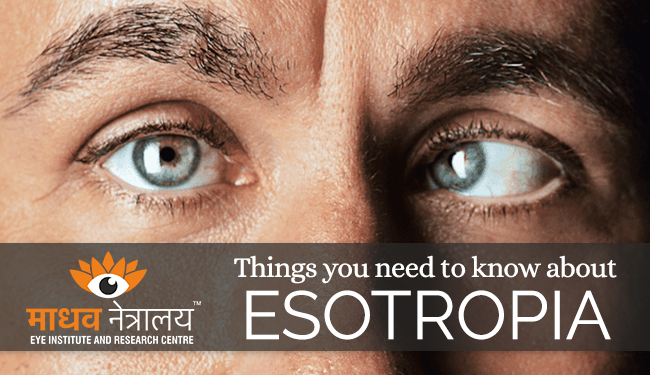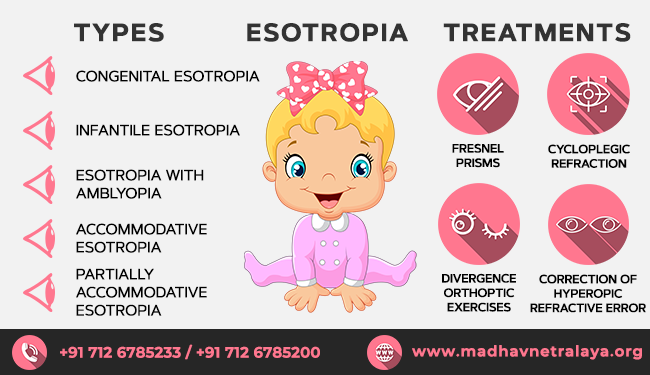Things you need to know about Esotropia

The term Esotropia derives from Greek, where 'eso' means 'inward,' and 'trope' means 'turn.'
Esotropia is an eye misalignment in which one eye is deviated inward, or nasally. The deviation may be constant or intermittent. The deviating eye may always be the same eye or may alternate between the two eyes.
People with esotropia may notice that they cannot focus their eyes on the same place at the same time, and they may only be able to see objects fully with one eye.
People with symptoms of esotropia will usually be examined by an eye doctor, ophthalmologist, or optometrist, who will take a complete medical and family history before carrying out eye examinations.
The treatment for esotropia depends on the severity of the condition, and the length of time it has been present.
Other factors informing the treatment plan include whether misalignment is present in one or both eyes, and whether the esotropia is accommodative or not.
Facts About Esotropia:
Those with esotropia often look like they have crossed eyes.
Untreated esotropia may cause complications in both children and adults.
Types of Esotropia:
One of the most common forms of strabismus (crossed eye), accommodative esotropia is characterized by eye crossing that occurs when the eyes are trying hard to focus to see objects clearly.
People with accommodative esotropia, also known as refractive esotropia, usually have farsightedness (hypermetropia).
Esotropia can be classified by its frequency, the person's age when it develops, and whether it is related to eye-focusing or not.
- Infantile: The infantile form of the condition begins during the first year of life. Infants with this condition are unable to use their two eyes together.
- Acquired: If esotropia develops later in life, it is known as acquired esotropia. It may result from medical conditions, such as diabetes, or other eye problems, such as untreated farsightedness.

Treatments
Detailed evaluation by a squint specialist is mandatory for all types of esotropia.
Cycloplegic refraction should be done by trained optometrist.
In some types only glasses can treat esotropia!
In some types only glasses can treat esotropia!
Surgery is performed on the extraocular muscles in an attempt to give binocular single vision, to relieve double vision , or to restore the eyes to their regular state of alignment. The prognosis for surgical success is best if the patient has an intermittent esotropia rather than a constant one, and alternating esotropia, and if any amblyopia is treated.
Nonsurgical treatments include patching, correction of full hyperopic refractive error, and divergence orthoptic exercises for divergence insufficiency. Fresnel prisms or prism glasses can be used to relieve diplopia double vision or asthenopia in certain patients.